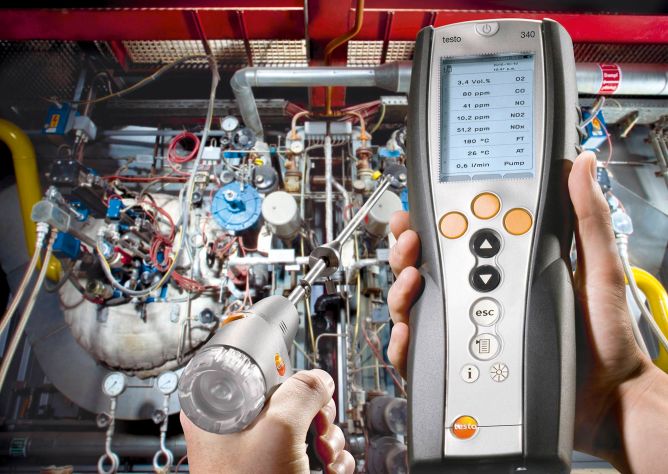
In some industries, such as steel mills, power plants or glass refineries, create a hot gas during their combustion process that is emitted via the building's chimney or flue. This gas is known as "flue gas".
In the past, analysing this flue gas was a time-intensive and expensive process. But modern-day advancements in technology has resulted in flue gas analysis being cheaper and more convenient than ever.
Here is a basic guide to flue gas analysis, and why it is important to conduct these tests regularly.
What does flue gas consist of?
The exact chemical composition of flue gas is dependent on what is being burned, and how. However, flue gas typically consists of the following:
- Carbon dioxide
- Nitrogen
- Sulphur
- Water Vapour
- Oxygen
- Carbon Monoxide
- Solids (dust, soot)
- Various other pollutants
Of all the emissions listed above, carbon dioxide and nitrogen are the two most harmful. This is because they are not only dangerous to humans, but simultaneously have a significant environmental impact. Carbon dioxide and nitrogen damage the ozone and contribute to climate change.
Fortunately, the amount of pollutant in flue gas can be mitigated through the use of dedicated purification units and switching to low-emission fuels. But to control and monitor such processes, it is crucial to conduct regular flue gas analysis.
Why should I conduct flue gas analysis?
Flue gas is indicative of the performance of a heating system or power generation plant. By conducting regular glue gas analysis, you are ensuring that the plant is achieving optimal efficiency at all times. Flue gas analysers help show that you are achieving maximal possible carbon combustion in your fuel.
Another use of flue gas analysis is to determine environmental impact and whether you are maintaining compliance with local emission regulations. New Zealand is known to have very stringent emission standards when it comes to pollutants and emissions, so conducting regular gas analysis is a necessity in ensuring that both your legal and ethical obligations are fulfilled.
What tools are available for flue gas analysis?
The right flue gas analyser will be dependant on what type of generator you are studying. Different devices come with a variety of different features. For example, some analyses tools come with specially designed printers that enable users to quickly create simple, clear reports while on the worksite. One such device is the Testo 310 Flue Gas Analyser. If you require a hi-resolution display with a more robust feature set, then consider the Testo 320 Flue Gas Analyser. These devices are capable of taking readings on CO, O2, and CO2 levels. They are also capable of measuring ambient CO2 levels.
However, if you are analysing larger combustion plants, an industrial furnace, or and industrial engine, you will need a top of the line solution such as the Testo 350XL. This is a highly proficient tool that is capable of measuring six gasses simultaneously. It has 10 pre-calibrated sensors which can reliably measure O2, CO, COlow, NO, NOlow, NO2, CO2, IR, SO2, H2S and CxHy.
If you are not sure about which flue gas analysis tool is best suited for you, consider getting in contact with the team at Testo today. Testo is market leaders in portable and stationary measurement equipment and considered a worldwide authority on flue gas and flue gas analysis. Get in contact with Testo today!

